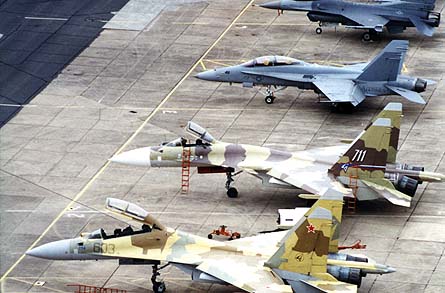By Julian Moxon in London
While it had been the seat of aviation research since before the First World War, the origins of the Farnborough air show date from the Royal Air Force’s annual show at Hendon, held between 1920 and 1937. In 1932, the Society of British Aircraft Constructors, formed in 1926 and now the Society of British Aerospace Companies (SBAC), introduced a civil element to the event with a small exhibition park at Hendon as a showpiece for the UK civil aircraft industry – just 30 aircraft, 13 aircraft manufacturers and six engine companies were present including Avro, Vickers, de Havilland, Bristol and Rolls-Royce.
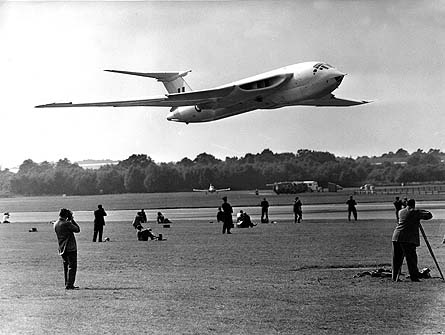 |
|---|
| In the post-war years, Farnborough hosted many of the finest aircraft built by UK industry, including the Handley Page Victor bomber, seen here making an ultra-low-level flypast in 1960 |
By 1936 the show had outgrown itself and moved to the de Havilland aerodrome at Hatfield, north London, featuring several aircraft that were to become famous in the Second World War, including the Fairey Battle, Hawker Hurricane and Supermarine Spitfire. The following year the show became a two-day event for the first time, the first dedicated to the static display, the second to flying.
After the war, the show moved to Radlett in Hertfordshire in 1946, and in 1948 was moved again, to Farnborough. In 1962 it became biennial, held on even years and alternating with the Paris air show. A decade later a European element was introduced and in 1974 it became truly international – although nothing from the former Soviet Union was seen until the first appearance of the Ilyushin Il-86 in 1984.
First flights
Flying at the 3.7km2 (1.4 miles2) Farnborough site began when the Balloon Equipment Store relocated to Farnborough from Greenwich in 1905 to become HM Balloon Factory. The first powered flights in the UK then took place, the British Army’s new airship setting a record for a non-rigid airship when it flew from Farnborough for 50 miles (80km) in 3h 20min.
In 1908, US air navigator and balloonist Samuel Franklin Cody made the first recorded sustained powered flight in the UK in British Army Aeroplane No 1, a biplane powered by a 50hp (37kW) Antoinette rotary engine. On his third flight at the airfield he managed 1,390ft (425m) before crashing when a wing hit the ground.
The Balloon Factory was renamed His Majesty’s Aircraft Factory in 1911, becoming the Royal Aircraft factory the following year and the Royal Aircraft Establishment (RAE) in 1918. The RAE concentrated on aviation research and over the years numerous test installations arrived, including the 7.3m (24ft) transonic windtunnel, built in 1939 and upgraded in 1951-6, various other windtunnels, a huge seaplane test tank (1930), weapons test facilities (1938), a structural test building (1942) and buildings housing aerodynamics and other specialised research facilities.
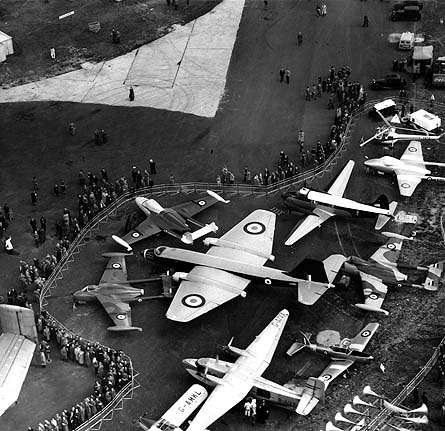 |
|---|
| (clockwise from far left) two de Havilland Venoms, and de Havilland Dove, a de Havilland Vampire, a third de Havilland Venom, a DHC-1 Chipmunk and a Shorts Sealand surround and English Electric Canberra at the 1952 show |
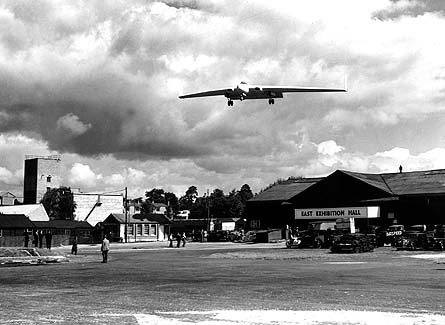 |
|---|
| Two of these elegant Armstrong Whitworth AW52 "flying wings" were built. This aircraft, powered by two 5,000lb Rolls-Royce Nene turbojets, was shown at the 1948 show but crashed a year later, its pilot John Lancaster making the first emergency ejection in Britain |
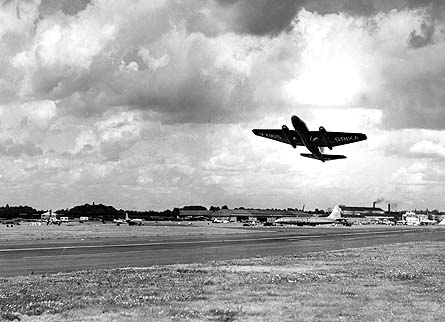 |
|---|
| An English Electric Canberra takes off during the 1950 show, probably piloted by the legendary Roland Beamont. A Bristol Brabazon is seen in the background |
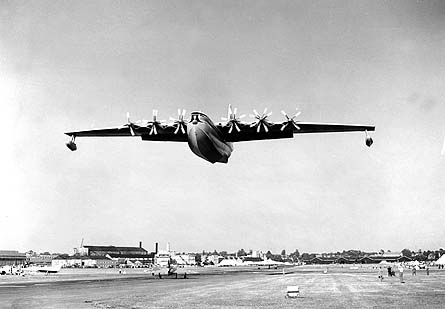 |
|---|
Saunders Roe Princess, then the largest all-metal flying boat in the world, at the 1953 show. Although it never entered service, the Princess pioneered many important developments, including the design of large pressurised fuselage structures. The 1997 show featured a pair of Sukhoi Su 27s.
|
Post-war years
In the post-war years the show hosted the finest aircraft that UK industry could produce. The Gloster Meteor and Javelin fighters, the Avro Vulcan (which made its debut in 1952 only three days after its first flight) Vickers Valiant and Handley Page Victor nuclear V-bombers, English Electric Lightning and Canberra, and research aircraft such as the odd-looking Handley Page HP115 and Fairey Delta 2, forerunners of the Concorde.
Much of the research into supersonic flight took place at Farnborough, but in 1952 the show saw its most tragic event when the de Havilland DH.110 flown by test pilot John Derry broke the sound barrier in front of thousands of spectators, then disintegrated and fell, one of the engines entering the crowd and killing 31 people including both crew members.
On the civil side the enormous eight-engined Bristol Brabazon, the first aircraft to have fully powered flight controls, slid over the famous Black Sheds into the show in June 1949 – the same year the ill-fated de Havilland Comet, the world’s first jet airliner, was exhibited. Other notable events included a “slow roll” of the second prototype Vulcan nuclear bomber in front of an astonished press gathering by “Roly” Falk in 1955, the first Concorde flypast in 1970 and, in 1986, the appearance of what was then the world’s heaviest aircraft, the Antonov An-124, along with a pair of MiG-29 fighter aircraft – the first time they had been seen in the West.
In 1990 the first Sukhoi Su-27s at Farnborough performed the “Cobra” manoeuvre and two years later the Tupolev Tu-22 supersonic bomber dominated, to be followed in 1996 by the first Northrop B-2 stealth bomber making a flypast.
The story goes on – this year promises also to be a vintage event, with the first appearance at Farnborough of the twin-deck Airbus A380 and of the Bell Boeing V-22 Osprey tiltrotor. ■
Source: Flight International














